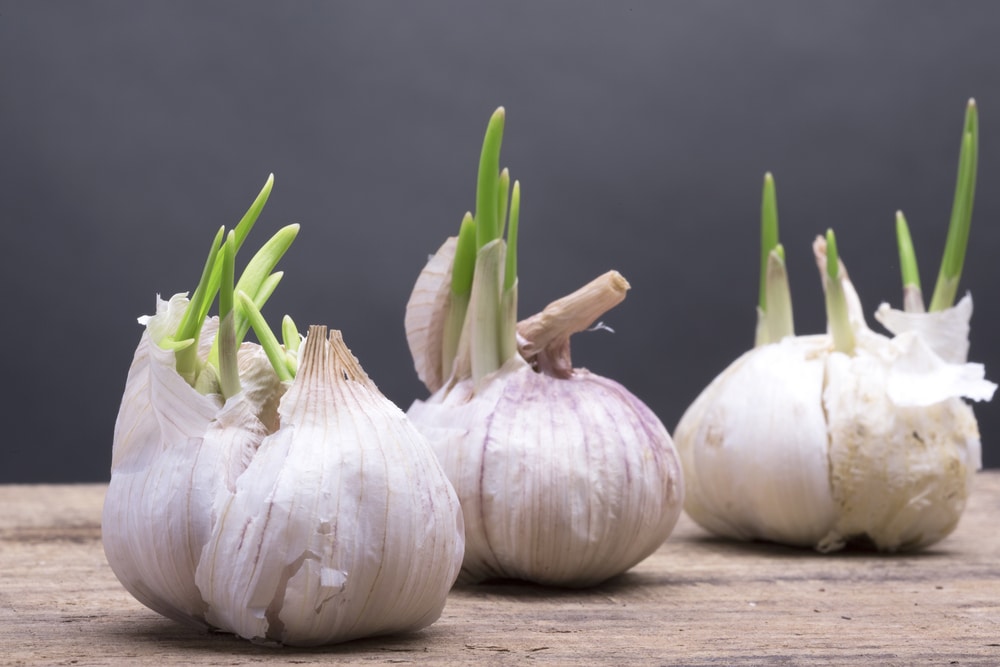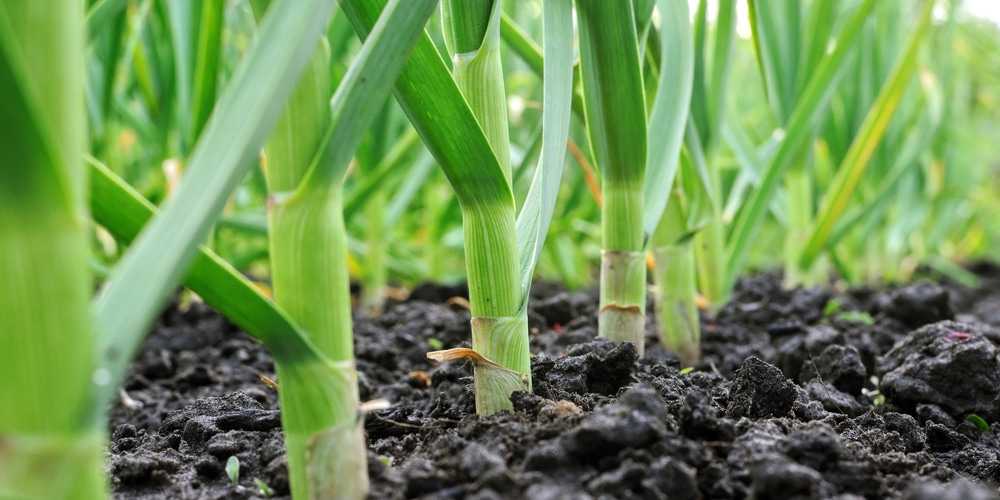Garlic Varieties and Climate Requirements

When selecting garlic for planting, gardeners must consider two primary types: soft-neck and hard-neck.
Soft-neck varieties are typically more resilient and better suited to warmer climates. They often produce a larger number of cloves per bulb and store well. In contrast, hard-neck varieties thrive in cooler climates, offering a robust flavor profile and a central stalk or “scape” that can also be harvested.
The USDA hardiness zones play a pivotal role in determining the optimal planting time for garlic.
- Zones 1-3: Gardeners should opt for a late spring planting to prevent premature sprouting.
- Zone 5: Planting is ideal in late September to early October.
- Milder Climates (Zone 7 and above): Planting can extend to January.
Garlic generally requires a period of cold to initiate clove development, which makes fall planting crucial for these varieties.
Here’s a summary for quick reference:
| Zone Range | Planting Season | Garlic Variety |
|---|---|---|
| 1-3 | Late spring | Hard-neck |
| 5 | Late September – Early October | Hard-neck |
| 7 and above | Up to January | Soft-neck |
Gardeners should plant garlic cloves 4-6 weeks before the ground freezes to allow sufficient time for root establishment.
Most varieties require well-drained soil and full sun exposure. Soil temperatures should ideally be between 45°F-55°F (7°C-13°C).
Monitoring and adjusting planting times as per local climate conditions ensures robust growth and a fruitful harvest.
Preparing the Soil for Garlic Planting
For successful garlic cultivation, soil preparation is of paramount importance.
Soil Composition and Amendments
The grower must establish a well-draining, nutritious soil base with proper acidity to foster robust garlic bulb development.
Garlic thrives in soil that is rich in organic matter, which ensures adequate drainage and nutritional content.
Soil composition should ideally be a sandy loam, but average soil can be improved to suit garlic’s needs:
- Add Organic Matter: Incorporate 1 to 2 inches of well-rotted compost into the soil to enhance fertility and structure.
- Nitrogen Source: An organic nitrogen source like chicken manure bolsters stem development, which is crucial for garlic.
Optimal amendment ensures the roots have enough room to expand and prevents waterlogging, which garlic is particularly averse to.
pH Levels and Soil Testing
The soil pH is a critical measure of the soil’s acidity or alkalinity and influences nutrient availability.
Garlic favors a pH level:
| Soil pH Level |
|---|
| 6.0 to 7.0 |
A soil test can ascertain the present pH level and nutritional profile, guiding amendments needed for the desired pH range.
This testing can be done via local agricultural extension services.
Adjusting the soil pH, if necessary, involves:
- Reducing Acidity: Adding lime can raise the pH to make soil more alkaline.
- Lowering Alkalinity: Applying sulfur can lower the pH to make soil more acidic.
Accurate pH adjustment ensures nutrients in the soil are accessible to the garlic plants, promoting healthier growth and better bulb production.
Garlic Planting Techniques and Timing
Successful garlic cultivation hinges on selecting the optimal planting time and mastering the proper techniques for depth and spacing of cloves.
Choosing the Right Planting Time
In USDA Zone 5, garlic growers should target late September to early October for planting.
Garlic requires a period to establish roots before the ground freezes, yet planting too early could result in tender growth that frost may damage.
One should consider the local climate and adjust planting times slightly if living outside Zone 5. This ensures garlic can take advantage of cooler temperatures for root development without being exposed to extreme frost.
Planting Depth and Spacing
When planting garlic, the depth at which cloves are planted is crucial:
- Depth: Each garlic clove should be planted 2 inches deep into the soil.
Appropriate spacing is also key to prevent overcrowding and to ensure that each plant has enough nutrients to develop a full bulb:
- In-row spacing: Plant cloves 4 to 8 inches apart.
- Row spacing: Ensure rows are spaced 6 to 12 inches apart.
Garlic Care Throughout the Growing Season
During the growing season, consistent care is crucial for cultivating healthy garlic bulbs.
This includes proper watering and mulching, as well as diligent weed management and regular fertilization to ensure robust growth.
Watering and Mulching
Garlic requires even moisture, especially during the initial stages of growth and in the weeks leading up to bulb formation. Here’s an outline to ensure proper watering:
- Consistency: Water once a week, providing about an inch of water each time.
- Adjustment: Reduce frequency as the bulbs mature to avoid excess moisture, which can cause rot.
Mulching is beneficial in retaining soil moisture and regulating temperature. Use the following approach:
- Material: Apply 3 inches of organic mulch, such as straw or shredded leaves.
- Timing: Mulch soon after planting and again before the winter if in a colder climate.
Weed Management and Fertilization
Garlic competes poorly with weeds, so a weed-free environment is optimal. The strategy for weed management includes:
- Regular Inspection: Check for weeds weekly and remove them by hand to avoid disturbing the garlic roots.
Fertilization is equally important and should be done strategically:
- Initial Fertilizer: Start with a balanced fertilizer at planting time.
- Follow-up Feeding: Apply a high-nitrogen fertilizer early in the spring to promote strong leaf growth, which is essential for bulb development.
Harvesting and Curing Garlic
The process of harvesting and curing garlic is crucial for achieving the best quality and longevity of the bulbs. Knowing the precise timing for harvest and the right methods to cure garlic ensures a bountiful yield that can be enjoyed long after it is picked.
Recognizing Harvest Time
Garlic is typically ready to harvest when the lower leaves start turning yellow and the upper leaves remain green.
One should check the bulbs by gently digging up a few and looking for well-formed cloves. At this stage, the skins around the cloves are still tight and not split. The best timing is often when approximately half of the leaves have yellowed.
Proper Curing Methods
Curing garlic properly is essential for storage.
The process begins right after harvesting, where bulbs should be laid out or hung in a well-ventilated, dry area away from direct sunlight for several weeks.
During curing, roots and leaves desiccate, and the outer skin becomes papery. After curing, the garlic stems can be trimmed to about an inch above the bulb, and any remaining soil should be gently brushed off.
Frequently Asked Questions
In this section, readers will find precise answers to common queries about planting garlic, ensuring a clear and direct path to cultivating robust garlic bulbs.
What is the optimal depth for planting garlic cloves?
Garlic cloves thrive best when planted at a depth of 2 inches, with the pointed end facing upward. This depth allows for sufficient root development while preventing the cloves from being too close to the surface or too deep to hinder growth.
Can garlic be successfully cultivated in containers, and if so, how?
Yes, one can grow garlic in containers.
They should choose pots at least 8 inches deep with proper drainage. The cloves must be placed at the same depth as in-ground planting and spaced adequately to accommodate their growth.
What are the ideal companion plants to grow alongside garlic?
Garlic pairs well with many plants, including tomatoes, peppers, and eggplants, which benefit from garlic’s natural pest-repellent properties. However, they should avoid planting garlic near beans and peas, as it can inhibit their growth.
During which months should garlic bulbs be planted for optimal growth?
In temperate climates, garlic bulbs are usually planted in the fall, typically in October or November. This allows for root establishment before the cold sets in.
For warmer climates, planting may occur in late winter or early spring as soon as the soil is workable.
Are there any specific techniques to avoid when planting garlic?
Gardeners should avoid planting garlic cloves too shallow or too deep, as well as overwatering or planting in soil that doesn’t drain well. Garlic requires well-drained soil and moderate watering to prevent rot.
Is it necessary to soak garlic bulbs before planting, and what are the benefits?
Soaking garlic cloves in a baking soda solution or organic fungicide before planting can help prevent fungal infections.
Soaking in a liquid seaweed solution can also encourage stronger root development. However, this step is not strictly necessary for successful garlic growth.
